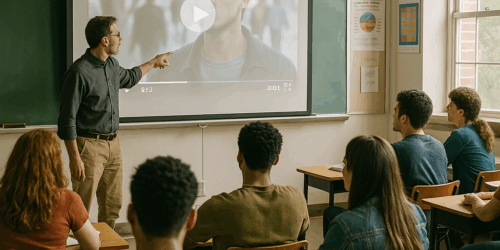Lights, Camera, Learn! Best Practices For Sharing Videos During Class
Reading Time: 6 minutesLet’s be honest—lecturing for 60 or 90 minutes straight is tough on students and faculty alike. Research shows that student attention begins to drop after about 20 minutes of passive listening (Bradbury, 2016). That’s why integrating active learning strategies is so important—and one of the most effective tools in your teaching toolkit is video. Whether it’s a short documentary clip,...















